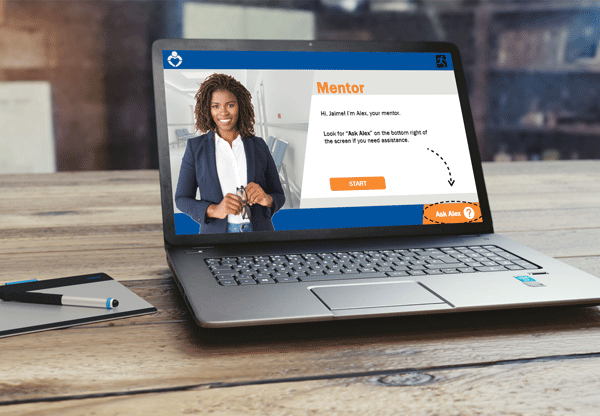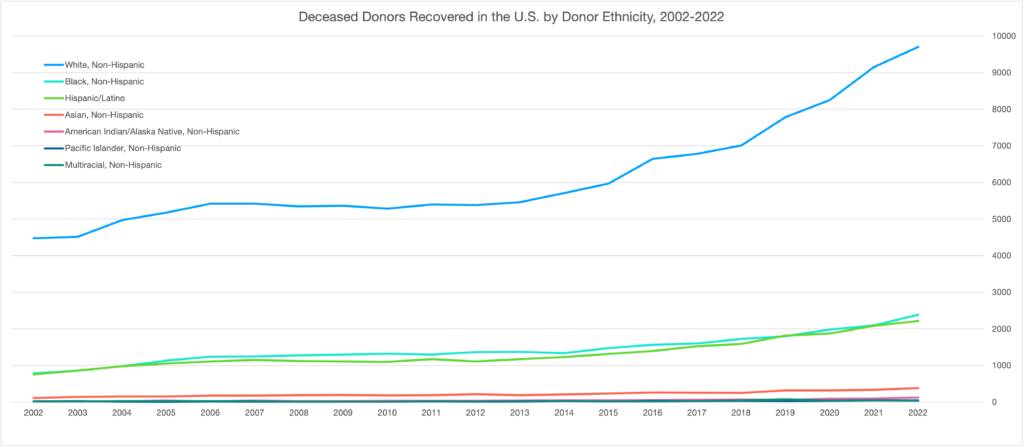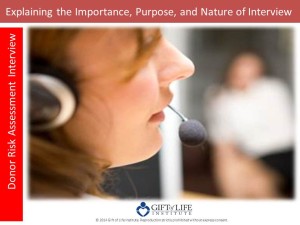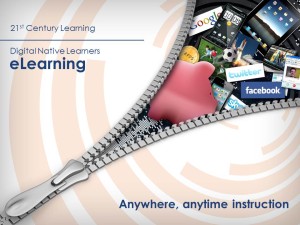The Institute’s latest eLearning course – “Reaching Across Cultures” – equips learners with essential skills to navigate cultural nuances when it comes to organ and tissue donation among diverse populations. The content was developed in partnership with Dr. Heather Marie Gardiner, professor of social and behavioral sciences at Temple University’s College of Public Health. Gardiner recently joined Instructional Designer Shimrit Lee to discuss her research and the importance of education in fostering a more inclusive and effective donor community.
Shimrit Lee: Tell us about your research.
Heather Marie Gardiner: My work focuses on addressing health disparities, particularly in the realm of organ and tissue donation and transplantation. At the Health Disparities Research Lab, my team and I are dedicated to improving the organ donation process, reducing transplant inequities, and increasing access to transplantation services for marginalized communities.
SL: What kind of methods do you use to track disparities?
HMG: I employ a mixed-methods approach, drawing on both quantitative and qualitative methodologies. This includes developing and implementing protocols for in-depth interviews and focus groups and employing structured and semi-structured surveys. Additionally, I apply advanced statistical methods to analyze data and uncover patterns and disparities in health outcomes related to organ donation and transplantation.
One of the core aspects of my research is community engagement. At the Lab, we actively involve underserved minority populations in our research initiatives to ensure that our work directly addresses their needs and challenges. This community-centered approach not only informs our research design and implementation but also enhances the impact and relevance of our findings.
SL: What do you see as the most significant barrier to transplantation for marginalized communities?
HMG: First, I just want to emphasize that no population is a monolith. Plus, it’s nearly impossible to identify a single barrier to donation. Among African Americans, for example, disparities in donation are rooted in a complex interplay of historical mistrust of the medical system, concerns about fairness in organ allocation, and cultural and religious beliefs.
To overcome these barriers, targeted efforts are required to address misconceptions, improve education about the organ donation process, and rebuild trust within the healthcare system. Community engagement, culturally sensitive outreach, and collaboration with religious leaders can play pivotal roles in fostering a greater understanding and acceptance of organ donation among this group. Efforts must focus on promoting transparency, equity, and inclusivity within the donation system to encourage broader participation and ultimately save more lives.
SL: What is the role of education in reducing these barriers?
HMG: Training in culturally humility is integral to ensuring organ donation professionals understand diverse perspectives and engage in respectful and effective communication. This involves dispelling myths, addressing concerns related to religious or cultural beliefs, and being aware of how implicit biases may affect interactions with patients and families. Training in trauma-informed approaches is also key to understanding the emotional and psychological aspects of donation conversations. These are all topics covered in the eLearning course that the Institute is offering.
Education efforts should align with policy changes aimed at reducing disparities in donation opportunities. This includes advocating for equitable access to donation services and addressing systemic barriers that disproportionately affect certain communities.


Lara Moretti has been providing bereavement counseling and support for families of organ and tissue donors since 2003 at Gift of Life Donor Program (GLDP). Currently the Director of Family Support Services at GLDP, Lara has served as secretary and co-chair of the AOPO Donor Family Services Council. She is also a member of the Gift of Life Institute’s faculty, where she leads trainings on the impact of loss and grief on family donation conversations. Lara was recently a named a Fellow in Thanatology: Death, Dying and Bereavement from the Association for Death Education and Counseling for demonstrating knowledge, experience, and education in death, dying, and bereavement.
We sat down with her to learn more about thanatology and its application to her work at Gift of Life.
What is thanatology?
Thanatology is the study of death, dying, and bereavement and the impact death has on those who are grieving.
What prompted you to study it?
As a bereavement counselor for donor families, I wanted to increase my knowledge about grief so I could better support the families we serve.
What have you learned about grief through your fellowship that surprised you?
I have been surprised by how resilient families are. Even though they have experienced a major loss, they show grace and compassion and can grow from the trauma they endured. Also, I have a greater appreciation for grief after non-death losses, such as the loss of one’s health, job, or home.
You work in family support services. How has your study of thanatology impacted your work in supporting donor families and recipients as well as the information you share through the Institute?
I feel I have a more well-rounded understanding of grief and that has allowed me to support families and recipients in their different displays of grief. Helping grieving individuals understand that what they are experiencing is normal can hopefully alleviate some of the pressure they put on themselves to grieve in the “right way.” There is no one right way. There is only your way.
In my work with the Institute, I see how critical it is to train donation professionals about acute grief so they can be better prepared to support families in conversations about donation. Most health care professionals have no formal training on grief so we enter the field with our own perceptions and ideas about what grief should look like.
What do you wish more people understood about grief?
In general, I think we are a fairly grief illiterate society even though all of us will experience grief in our lives. I wished more people understood that grief can manifest itself in not just emotional reactions but also spiritual, physiological, and cognitive reactions as well. Additionally, grief is not something that needs to be fixed or cured. It is a long process that must be experienced after a loss.
As an instructional curriculum designer for Gift of Life Institute, many people, some friends, my kids often, sometimes, once-in-a-blue-moon ask me what it is that I do. Scurrying for my job description I tell them (in my best announcer’s voice), “For the most part, I’m responsible for developing technology-based learning through the retooling of existing curriculum.”
Translation – I take many of our existing donation/transplantation courses and turn them into eLearning programs.
I’m sure that all of you have come across the term “eLearning,” but perhaps don’t know exactly what it entails. If you fit into this category, then you’ve come to the right place. Hopefully, after reading this blog you won’t have the same glazed look that my kids exhibit after I tell them what I do for a living.
So, What Exactly Is eLearning?
Simple answer: (e)lectronic learning. If you’re over the age of 40, you might also know it as distance learning, or web-based training, or online learning; or, for those of us on the north side of 50, computer-based training. Semantics (and age admittance) aside, a good, general way to think of eLearning is the use of electronic media (computers, tablets, phones, etc.) to educate or train learners.
Most people would recognize a basic eLearning course as a slide-based online activity that contains simple navigation buttons (e.g., Next and Back) and incorporates quizzes with true-false or multiple choice questions.
But not all eLearning courses share the same DNA. For example, an eLearning course could be a software simulation that demonstrates the navigational path through an application, such as an online tutorial on TurboTax. Or, it could be an interactive course that features role-playing and decision-making (e.g., Gift of Life Institute’s “Conducting the Donor Risk Assessment Interview” and “The Donor Physical Assessment”).
How Has eLearning Evolved?
Changes in technology have impacted the types of hardware tools we use. We’ve gone from the exclusive use of desktop computers to a mix of desktops, laptops, tablets, and smartphones. Naturally, eLearning has followed suit to span the array of devices we use.
The learner’s way of accessing eLearning has also evolved. It wasn’t too long ago that learners had to add custom applications or download players before they could view course content. This often took time and was beset with challenges for the learner—even before the course started.
In the late nineties, Adobe Flash became the standard for eLearning, which made it easier to view eLearning content. A majority of browsers (Internet Explorer, Google Chrome, Mozilla Firefox) come with Flash, so learners can access courses through the Flash player in their browser. However, most mobile devices and tablets are not Flash compatible, so developers are shifting to HTML5 to publish and share eLearning courses.
And Speaking of Sharing
Once you’ve created an eLearning course, you need to distribute it to learners. There are basically two ways to do this:
Informal distribution
Informal distribution of eLearning content typically means users are not tracked for course completion or scored for assessments. One way to informally share an eLearning course is to put it on a web server, then send participants the link and have them view the course.
Formal distribution
Sharing an eLearning course formally means there’s a need to track and record learner participation and assessment results. As we know, AATB, AOPO, CMS, and other donation/transplantation governing bodies require that participation in training (including electronic programs) be documented.
Most organizations that have a need for formal distribution of eLearning have specific systems and standards in place. Tracking is usually done in what’s called a Learning Management System (LMS). An LMS refers to software used to administer, track, report, and document the delivery of eLearning courses.
What’s the Value of eLearning?
Although eLearning can’t, and won’t, totally replace traditional classroom training, it does offer a number of benefits:
Real-time access. Live learning events require that those who participate align their schedules to the training calendar. eLearning eliminates this because the course can be accessed anytime, anywhere – well, at least where there’s an online connection.
Freedom to fail. Let’s face it, real learning requires some failure. But no one likes to fail in a classroom full of other people, especially their peers. eLearning lets the learner fail without fear. This facilitates the exploration and testing of ideas. Worst case, the learner can always start over.
Improved retention. The use of multimedia, including text, graphics, audio, video, and animation can produce a very powerful learning experience. According to Richard E. Mayer, Professor of Psychology at the University of California, Santa Barbara (UCSB), “An active part of our memory system is working memory, which is where learning occurs. When graphics, text, video and audio are placed contiguously within an electronic platform, the learner doesn’t have to work as hard to retain the material and is a more efficient learner.” For more information on Mayer’s work, click here.
Ongoing access. If you take a class in the real world and need a refresher, you better hope that you took good notes. Otherwise, you’re out of luck. That’s not the case with eLearning. Ideally, you continue to have access to the online content and resources to brush up on what you learned.
Global reach. eLearning can be placed online and be easily accessed by people around the world. There’s no need for expensive travel or meetings across multiple time zones.
Multiple devices/mobile. Many online courses can work on computers as well as on mobile devices, such as smartphones and tablets. This means eLearning courses can literally be in the hands of the people who need them, at all times.
Some Final eThoughts
As the world becomes more connected and globalized, more people have consistent access to the Internet, computers, smartphones, and other technological devices. When we provide people with learning opportunities on these devices, they can use them to access timely resources and training while on the job. And because eLearning is not bound by geography or time, you can offer on demand opportunities to your employees, constituents, and partners.
Bob Norden is an Instructional Curriculum Designer at Gift of Life Institute in Philadelphia, PA




